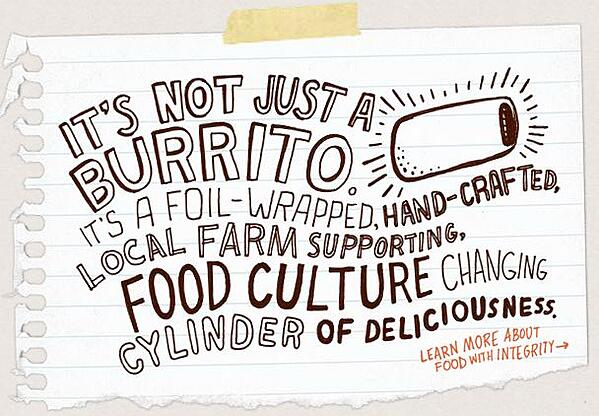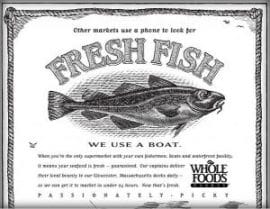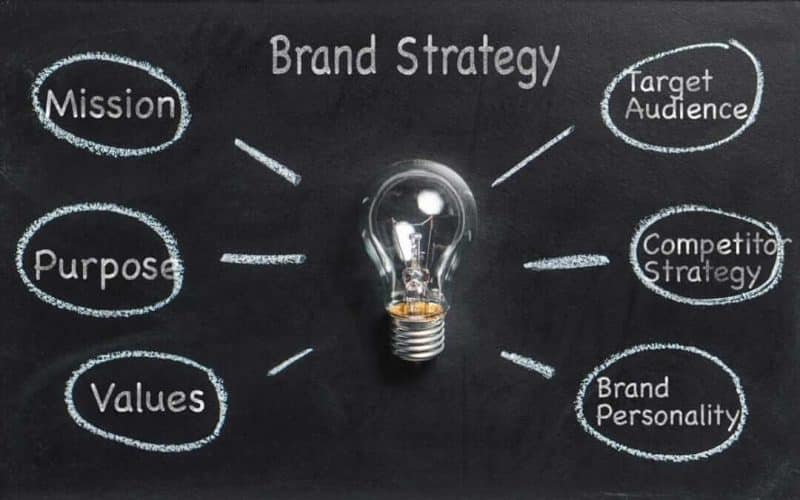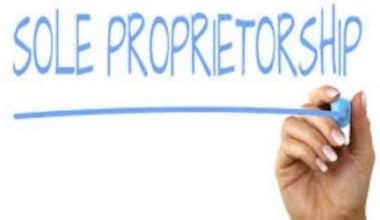When we talk about branding, we don’t just mean your firm’s look; we also mean how people interact with your organization and its products or services. To some extent, you have no control over this. You can, however, influence the experience with the right brand strategy. There is no single way to position your brand, as demonstrated by these marketing brand strategy examples. Instead, you’ll need to select the best plan for your company’s demands and use it to develop your brand strategy.
What is a Brand Strategy?
A brand strategy is a plan that includes specific, long-term goals that can be achieved through the evolution of a successful brand – the combined components of your company’s personality that make it identifiable.
Basically, a well-defined and executed brand strategy has a direct impact on all aspects of a business and is directly related to consumer needs, emotions, and also competitive environments.
To begin, let’s dispel the most common misconception about brand strategy: your brand is not your product, logo, website, or name.
In reality, your brand is much more than that; it’s the intangible stuff. But it’s that elusive sense that distinguishes between powerhouse and mediocre companies.
So, to assist you in reining in what many marketers regard as more of an art than a science, we’ve broken down the essential components of these comprehensive seven examples of brand strategy that will help keep your company around for a long time.
7 Brand Strategy Examples to Help You Develop a Memorable Brand
These seven businesses got it right. You may look for possibilities to mimic their method in order to develop your own brand strategy usage as you read through these seven examples.
Great brand strategy is a necessary component of gaining a competitive advantage.
- Simple
- Chipotle
- Dollar Shave Club
- Tesla
- Whole Foods Market Inc.
- Corona
#1. Simple
Do you use a mobile app to manage your bank account? If you’re anything like our brethren on the other side of the Atlantic, the answer is most likely yes. According to the British Bankers’ Association, the average UK banking customer now checks their money on their smartphone more than once a day.
Having said that, the concept of managing account balances via a mobile app is still in its early stages. This is simply, in collaboration with The Bancorp and BBVA Compass, which launched one of the world’s first non-physical banks in 2012. Simply targeted millennials who value convenience, budget, and beauty, as opposed to traditional banks, which cater to more mature demographics.

What is the startup’s main message? Banking should be as simple as possible. Also, everything from the app’s elegant design to the organization’s superhuman customer service exemplifies the UVP. Furthermore, a simple brand strategy took care of itself by identifying an obvious unmet need in the marketplace.
Simple stays true to its brand by asking, “How can we simplify this project even more?”
#2. Chipotle
Taco Bell dominated the Mexican fast-food market for several years. The chain restaurant was the standard for what the average American thought of as convenient Mexican cuisine. For the record, you haven’t eaten real Mexican fast food unless it consisted of homemade tortillas and fresh salsa (yes, I’m from south Texas)!

So, how did Chipotle disrupt the Mexican fast-food scene? Founder Steve Ells, a graduate of The Culinary Institute of America, decided to compete on quality instead of price. Ells saw an opportunity to introduce Americans to a fresher, more vegetable-focused form of Mexican food.
Aside from its predilection for witty one-liners, Chipotle has distinguished itself by positioning itself as a reliable source of high-quality ingredients. Chipotle is a fast-food restaurant, but it does not want its customers to have a standard fast-food experience.
Chipotle stays true to its brand by asking, “How can we create a down-to-earth, quality experience?”
#3. Dollar Shave Club
One of the examples of a brand strategy centered on the promise of “simplicity” is Dollar Shave Club. Dollar Shave Club, like our mobile app banking example, saw the opportunity to simplify an archaic process. Michael Durbin devised an alternative after identifying the purchase of high-quality razors as a grudgingly executed task for men. Dollar Shave Club would mail premium razors for as little as $1 each month.
The company went viral in 2012 as a result of a smart marketing film starring Durbin. Dollar Shave Club exemplifies the brand attribute of honesty, whereas Simple Bank interprets simplicity as elegance.
This is how Dollar Shave Club stays true to its brand, by always asking, “How can we provide a quality experience without taking ourselves too seriously?”
#4. Tesla
How does a company with a market worth of approximately $60 billion have a consistent failure to reach production targets? It sells more than just a wonderful product; it sells a vision. Tesla is known as much for its futuristic concepts as it is for its electric vehicles, thanks to creator Elon Musk. Thus, owning a Tesla entails participating in the next stage of human progress.

Furthermore, rather than selling itself as a standard EV, Tesla targets the high-end buyer. The company is dedicated to developing the quickest and most ecologically friendly EVs on the market. For example, can your Toyota Hybrid accelerate from zero to 60 mph in less than two seconds? The Tesla Model 3 has an incredible 220-mile range and a starting price of only $35,000.
The company’s brand strategy is mainly reliant on providing a superior customer experience. Also, Musk is well-known for reacting to customer tweets and directing his team to resolve issues raised on Twitter.
Tesla keeps true to its brand by asking itself, “How can we continue to push the edge in order to exceed expectations?”
#5. Whole Foods Market Inc.
Whole Foods initially entered the market as the go-to grocery shop for consumers who want “organic and natural” foods. Several years later, the company’s research revealed “foodies” as a highly valued client niche with significant untapped growth potential. Foodies are those who prefer high-quality ingredients for the sake of eating.

The grocery business began to wonder, “How do we persuade international cuisine lovers that Whole Foods is more than just a health store?” The solution was to develop a brand marketing strategy that spoke to “passionately fussy” diners while not alienating the “salad-munchers” who had helped Whole Foods succeed. What was the result? Thanks to some excellent advertising campaigns, the supermarket chain is now widely renowned for supplying both natural goods and also some difficult-to-find commodities.
Whole Foods maintains brand consistency by asking, “How can we better support our customers’ appreciation of high-quality products and food items?”
#6. Corona
Some brewers promote their products by using attractive ladies. Some people are strongly associated with sports fans. Others just appeal to the human urge to unwind. Can you figure out how Corona fits in?
Over the years, the Mexican beer-maker has earned a reputation as the perfect “on-vacation beer,” with marketing campaigns featuring turquoise waters, white sands, and stunning sunsets. Corona has created a dedicated following of customers who identify its products with unplugging, unwinding, and escaping from stress by maintaining brand consistency.
Corona keeps true to its identity by asking, “How can we motivate our customers to make time for relaxation?”
#7. Google
Google relaunched under the parent corporation Alphabet in 2015. The new corporate structure was established by the internet behemoth in order to increase transparency into how much money the corporation spends on side projects including drones, self-driving cars, and wearables.
Google is also on a mission to leverage technology to make people feel more educated, connected, and organized. The company’s extensive product range (for example, Maps, Chrome, Google Home, and YouTube) enables consumers to rapidly get the information they require.
Instead of emphasizing the technical features of its products, Google’s marketing stresses the numerous ways in which it improves people’s lives. One of the numerous reasons “Google” became a verb for completing online search queries is because of this humanized brand strategy. What if you told someone to “Yahoo it?”
Google maintains true to its brand by asking, “How can we make our users feel more connected to the world?”
Competitor Analysis
Another aspect that firms must investigate before implementing a brand marketing strategy is the competition.
Competitive analysis is critical since it enables you to discover what exactly distinguishes you from the competition, which is something you’ll want to emphasize in your marketing message.
Moreover, If you try to execute your marketing first, you may end up stating the same thing as every other firm, which does not motivate customers to choose you over them.
What causes some brands to fail?
The following are the top five reasons why some brands frequently fail at the marketing brand strategy:
- The long-term vision is lacking.
- Not establishing a clear brand identity and messaging.
- Inconsistent creative output.
- They do not comprehend their ideal customer.
- Product-to-market fit that is now obsolete or never existed.
Branding is the process of focusing your vision on a specific experience.
One issue I frequently notice is when organizations impose management workflows geared for analytical procedures on creative activity. Creative work should be based on “strategic frameworks,” which necessitates an entirely new process.
What is a brand mission statement?
A brand mission statement is a brief description of a company’s purpose and the benefits it provides to its customers.
Who is the target audience for a brand strategy?
The target audience for a brand strategy is the group of customers that a company wants to reach and serve.
What is brand positioning?
Brand positioning refers to how a company wants its brand to be perceived in the minds of its target audience. It is a company’s unique value proposition and what sets it apart from its competitors.
What is a brand promise?
A brand promise is the assurance that a company makes to its customers about the benefits and experiences they can expect from the brand.
What is brand personality?
Brand personality refers to the human characteristics and traits that a brand is associated with in the minds of its target audience.
Summary
The following are the most important brand strategy takeaways for 2023:
- You must conduct research and have an understanding of your customer.
- Also ensure you understand what your brand stands for and what its story is.
Before you can start conducting marketing campaigns, you must first develop your brand marketing strategy around the first two things. It’s both simple and also difficult. Take the time to do this right from the start, and your marketing approach will be far more successful.
Brand Strategy FAQs
What should a brand strategy include?
A 10-Step Brand Development Strategy
- Consider your overall business strategy. …
- Identify your target clients. …
- Research your target client group. …
- Also, develop your brand positioning. …
- Then, develop your messaging strategy. …
- Develop your name, logo and tagline. …
- Design your content marketing strategy. …
- Create your website.
Define product branding strategy
Product branding is the application of branding strategy principles to a specific item or product. It’s associating a symbol, name, and also design with a product to create a recognizable identity for that item. Product branding can be deeply complex, with focus groups, multiple rounds of designs, and so forth
Expantiate line branding strategy
Underline branding strategy, complementary products combine to form a complete whole with a common concept. … The products in the line draw their identity from the main brand. They enhance the brand by reinforcing each other. Line branding strategy improves the brand’s marketing power when marketed under a common brand.
Explain the 5 brand strategies?
5 Branding Strategies to Beat the Competition
- Stake your claim. Be clear about your brand promise. …
- Choose your ideal customer carefully. The biggest cause of dissatisfied customers is your tendency to try to sell to everyone. …
- Discover what’s important and deliver. …
- Make it easy to buy.






